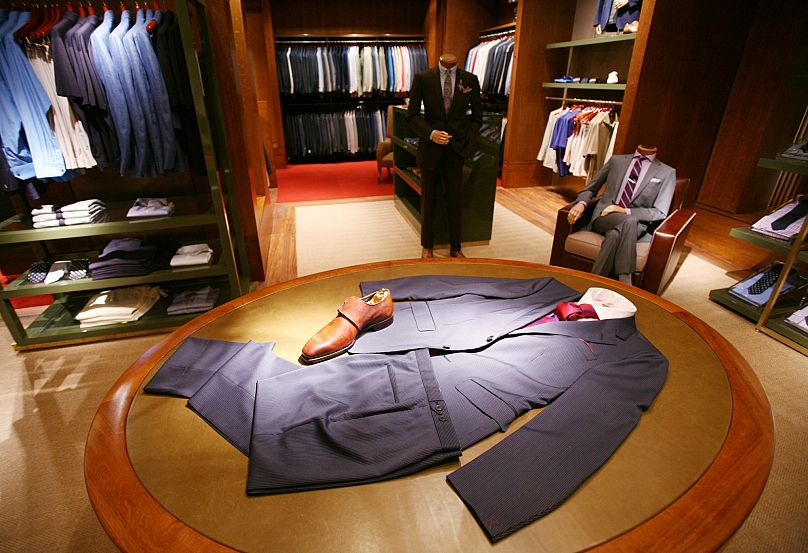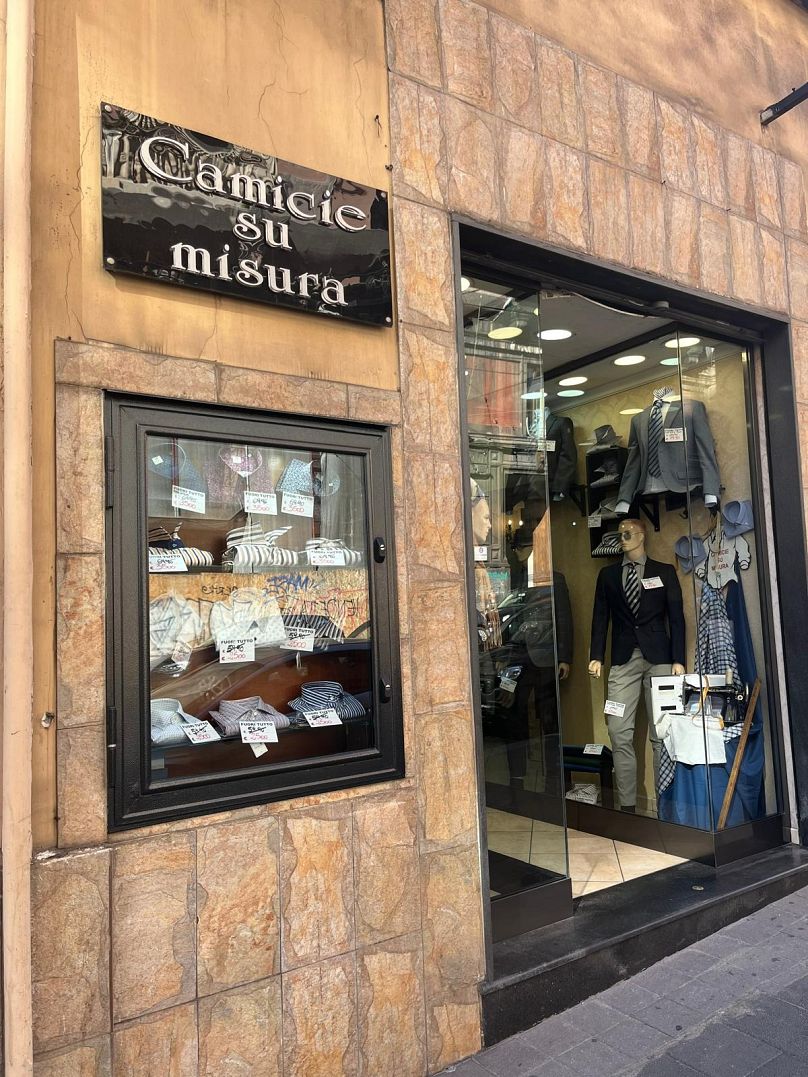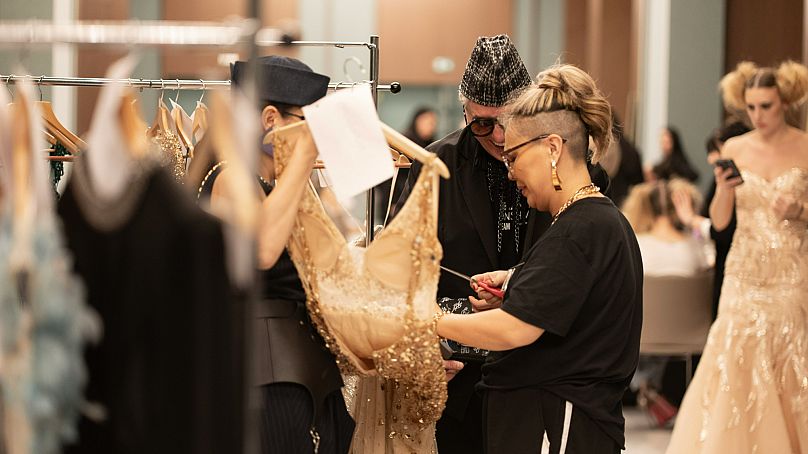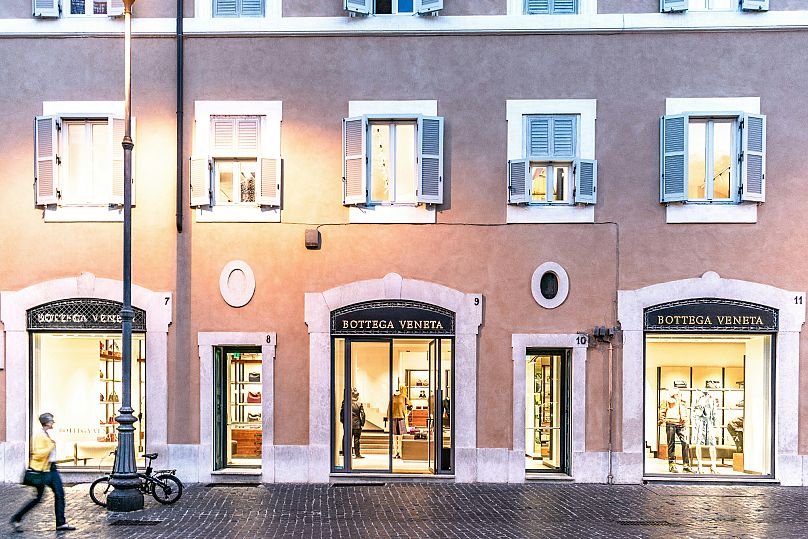Leather shoes, wool jumpers, tailored suits: Italy produces some of the finest apparel in the world. But so much of the country’s excellence relies on factors at odds with how modern design is developing.
Italian manufacturers are titans of the global fashion industry, long revered for their independent design houses, hand-worked products and locally sourced materials. But a crisis is looming for Made in Italy; everything from a lack of young apprentices to AI is threatening the prowess of Italian fashion.
At a recent conference in Venice, industry experts set out their vision for how Made in Italy can be relaunched for the future. They say supply chain transparency and sustainability urgently need to be addressed for Italian fashion to maintain its supremacy on the world stage.
A crisis for Italian tailoring
Leather shoes, wool jumpers, tailored suits: Italy produces some of the finest apparel in the world. But so much of the country’s excellence relies on factors at odds with how modern design is developing.
At the core of Italian fashion is hand-worked, artisanal craft, which often requires a long and painstaking period of training. Concerns are growing in the industry as young people are increasingly unwilling to undertake lengthy apprenticeships to learn the trade.
The stalwart of the Neapolitan fashion scene is the bespoke tailored suit. Streets in the city centre are lined with independent historic boutiques where master tailors pass on their prodigious skill to young apprentices. But in recent years, these ateliers have been struggling to find the workforce of the next generation.
With so many swifter and more immediately stimulating roads into the industry through fast fashion or large-scale technology, young people are now less willing to dedicate years to learning the art of tailoring.
Giuseppe and Massimiliano Attolini have dressed heads of state, actors, and entrepreneurs, and designed costumes for films such as House of Gucci. In their atelier, it takes 25 hours to hand-sew a jacket and 33 hours for a complete suit.
"The difficulty in finding workers isn't unique to us: it's a widespread, systemic problem," Giuseppe Attolini recently told Italian media. "Young people today aren't attracted to this work. They don't see any prospects, and no one offers them. They're looking for easy money and short career paths."
It’s the same story everywhere, from leather factories in Tuscany to wool weavers in Piedmont. According to artisan industry group Confartigianato Imprese, the second trimester of 2025 saw 1,035 clothing and leather companies close, partly due to the dwindling workforce. The entire fashion industry was worth approximately €104 billion in 2023. That dropped to €90 billion in 2024, while this year is expected to be around €80 billion.
Is AI a threat to Made in Italy?
A significant part of the prestige of Made in Italy is knowing - and often meeting - the designer behind an item of fashion. Experts within the industry warn that the rise of technology like AI undermines this key aspect of Italian fashion. As journalist Alessandro D'Ercole wrote in La Voce di New York, perhaps what is more crucial than Made in Italy is the concept of Made by Italians.
Simone Balducci, president of fashion industry group Federmoda for the Florence province, says the “human factor” has been underestimated. “To do our work, it takes at least five years of apprenticeship and ten to have a qualified worker who guarantees care and precision. Sometimes, it is thought that technological innovation can compensate for manual skills and artisanal intelligence, but this is not the case,” he told Italian media.
Supply chain transparency and sustainability are the future of Italian fashion
Last weekend, the fourth edition of the Venice Sustainable Fashion Forum came to a conclusion. The overarching message from industry experts was the urgent need to overhaul what Made in Italy stands for, beginning with stricter controls throughout production stages.
Foremost is the need for supply chain transparency to prevent mass-produced, foreign products of lower quality from coming into the market unnoticed. Industry group Confindustria Moda says it is developing a digital platform to provide verification methods for companies. The group says it will be an open-source system that everyone can use to identify “virtuous companies”.
The other key development will be in terms of sustainability. Italy’s National Chamber of Fashion is developing a common list of sustainability criteria for companies, while a parliamentary bill will propose a certification of conformity and a database of qualifying companies.
“A clear and shared message is emerging from Venice: sustainability is not a cost - it is our industrial identity and the true engine of Made in Italy’s competitiveness,” Luca Sburlati, president of Confindustria Moda, said during the conference. “The future of Italian fashion will be sustainable, competitive, and united - or it won’t exist at all.”






















